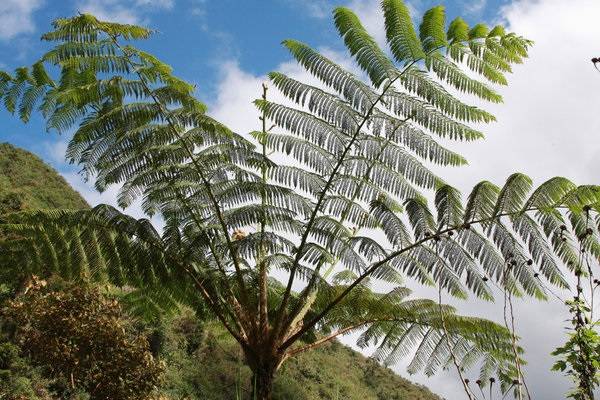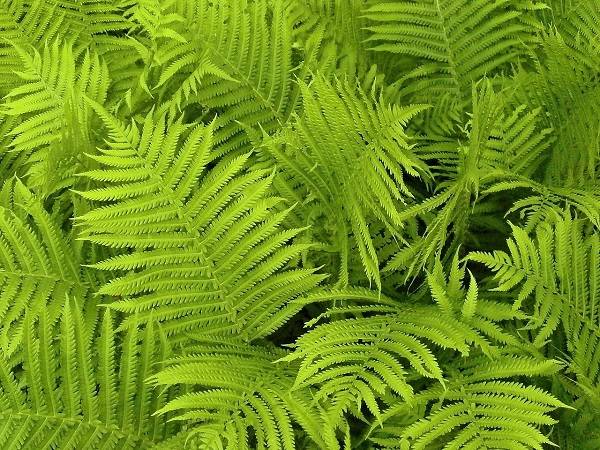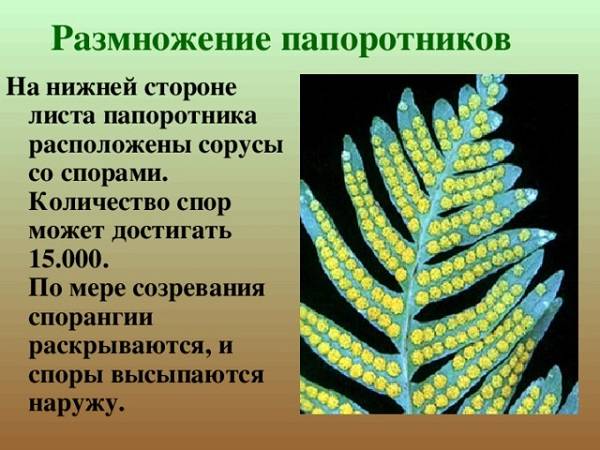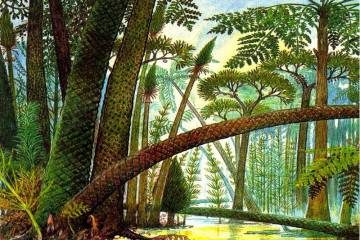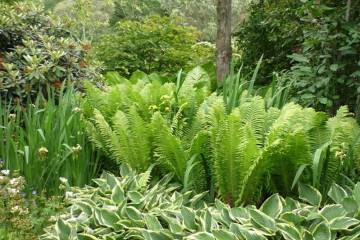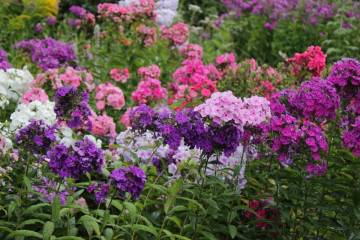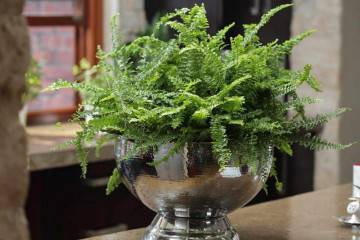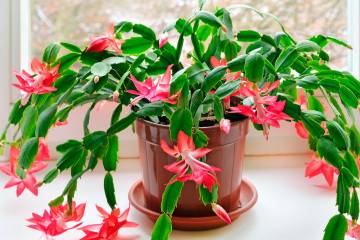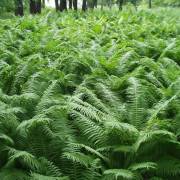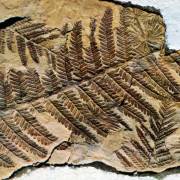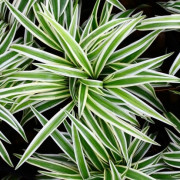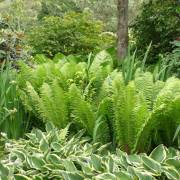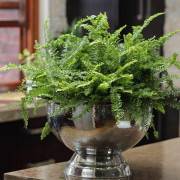What is the structure of a fern - features of leaves, fern roots
Content:
Fern-like plants have existed for a very long time and are represented by a wide variety of life forms. The first such plants appeared supposedly 400 million years ago. Now they live mainly in places with high humidity. The special structure helps them to easily adapt to new growth conditions.
General description of fern plants
There are several versions about what a fern is. The scientific community ranks it among the oldest plants - rhinophytes. In the process of evolution, the structure of the fern has become more complex, which is why the fern is classified as a higher plant.
Several facts that support this opinion:
- The plant develops in cycles.
- There is a developed vascular system.
- The bushes are distinguished by their good adaptability to the way they live on land.
Representatives of ferns are perennial shrubs belonging to the spore-bearing. However, all the same, many gardeners are concerned about the question: a fern is a shrub or grass. Both answers are positive.
Ferns are distinguished by a variety of colors and colors. Therefore, each plant is beautiful in its own way and will certainly decorate the place on which it grows. These unusual shrubs are often used in landscape design and home interiors. They practically do not get sick with proper care.
The plant looks like an evergreen shrub and does not bloom. However, for the Slavs, this flower was and remains a symbol of love and happiness. There is a tradition to look for him on the night of Ivan Kupala's holiday.
Biological classification of ferns
The classification of ferns is quite difficult due to the large number of species. Scientists have long attempted to build a system. There were trial circuits that were different from each other. And only much later a unified classification arose, based on the structure of the reproductive organ (sporangium) and some other signs.
Briefly - all plants are divided into 2 groups: ancient and contemporary. The fern division comprises 7 classes of extinct and currently existing vascular plants. These classes are summarized below:
- the oldest and simplest in structure group Aneurophytopsida;
- an ancient representative, similar in appearance to conifers - Archaeopteridopsida;
- "Blind evolutionary branch" - so called Cladoxylopsida;
- the transitional category to contemporaries is represented by Zygopteridopsida or Goenopteridopsida;
- modern plants - Ophioglossopsida or ophioglossopsida;
- large and compact perennials - Marattiopsida;
- one more contemporaries, among which perennials are more often found, less often annuals - Polypodiopsida (Polypodiopsida).
The latter are subdivided into 3 subclasses: Polypodiidae, Marsileidae, Salviniidae.
History of fern plant species
Ferns trace their history back to the days when there were dinosaurs on the planet. Then there was a favorable warm tropical climate.Some species grew simply huge by modern standards - up to 30 m.
Time passed, and the climate did not change for the better, as a result of which cataclysms occurred and the most ancient forms of the plant have not survived to this day. The modern division of ferns is very different from their ancestors in both size and shape. The largest group consists of 300 genera, represented by 10,000 species.
The tallest plants grow in a climate favorable to them - tropical and subtropical. Some individuals grow up to 20 m.
Distribution in nature, examples of species
Where and when a fern grows directly depends on the level of humidity and ambient temperature. Simply put, what kind of climate prevails in a given area. They can live in forests, rivers, lakes, swamps, as well as in damp meadows, ravines, road shoulders, rock crevices.
In temperate climates, there are about 100 herbaceous plants. Fern descriptions depend on the species:
- Bracken: The fern leaf of this variety is easily recognizable by its umbrella-like shape when open. It lives in forests (mainly pine) and is suitable for food use.
- Male dwarf plant with stems up to 1.5 m long is a rather rare species, its extract has a medicinal property to kill helminths, which is successfully used by medicine.
- The multi-rower is distinguished by dark green leaves, which are located in a row on the stem.
- Osmunda grows in natural conditions in eastern Asia and the American North, stands out for the shiny surface of elongated leaves.
- Kochedzhnik female is a large-sized plant with graceful leaves.
- The ostrich is known as one of the most beautiful ferns, it has long rhizomes that create real thickets, this effect is used in landscape decoration.
There are varieties intended for indoor cultivation:
- Pteris;
- Dixonia;
- Kostenets;
- Davallia;
- Nephrolepsis;
- Asplenium.
Separately, it is worth highlighting Junior - a variety with a corrugated sheet.
In the mountains, you can see another amazing plant with graceful openwork leaves. Hair Venus is called. There are also underwater inhabitants such as Marsilea quadrifolia. And the Dicranopteris fern has very strong petioles.
There are ferns that are rare and endangered species. So, Salvinia is listed in the Belarusian Red Book.
How many ferns live
There is no single answer to the question of how long ferns can live. It depends both on the place and on the care (if it grows at home or in the garden). Plays a role and belonging to the species. In temperate climates, when a cold snap sets in, the upper part of the plant dies off immediately, and in tropical conditions the bush can grow for many years in a row.
However, the roots, which are adventitious, are renewed every 4 years, and the rhizome increases the lifespan in this case up to a whole century. It is the powerful root system that allows the plant to survive and adapt to changing conditions.
Features of plant nutrition
Ferns are plants that feed on roots and leaves. They suck up important microelements and water from the ground. The leaves are involved in photosynthesis. Thus, sugar and starch are obtained, which are required for the work of all organs of the fern.
Analysis of the structure of fern plants
The ancestors of ferns were simpler than modern species.
Leaves, frond
The peculiarity of the structure is represented by massive leaves, which are heavier than the entire stem of the fern. They differ in a variety of forms, have their own characteristics in growth and dispensation. Typically, the leaves are feather-shaped and dissected. Fern leaves are called fronds (this definition was given by scientists). The petiole is attached to the stem part, which is underground, so it is not immediately possible to see the beginning of the leaf.
Leaves develop first underground. This period lasts 2 years. In the third year, they become visible above the surface. Due to the growth of the tops, there is a rapid growth. For many, fronds take part in photosynthesis, the process of vegetation and sporulation.
Spores are formed on the reverse side of the leaf plate both singly and in groups.
Stems
The stem of the ferns is always small and underdeveloped. The exception is plants in the tropics, which grow to the size of a tree. Their trunks are large, covered with bark. The curly stem can be very long.
Root system
The root system is represented by a rhizome and many appendages. The stem is covered with a fabric that perfectly conducts and absorbs water. It moves along the bundles-vessels to the leaves.
Reproductive organs
All plant life has 2 main cycles:
- Prolonged asexual, when the fern does not reproduce, is a sporophyte.
- The short is a gametophyte when breeding occurs.
The reproductive organs are represented by sporangia, which contain spores. Located on the back of the sheet. When the spores are ripe enough, the wind carries them long distances.
Not all disputes survive, only a few. The reproduction phase begins with germination and transformation into an outgrowth, which is called a gametophyte. It resembles a plate of several mm in the shape of a green heart.
From the bottom of the gametophyte, antheridia and archegonia are formed, respectively, female and male reproductive organs. They produce eggs and spermatozoa, which combine with a sufficient level of humidity. The result is a zygote. It is from it that the embryo of the future plant appears.
The fern can reproduce vegetatively. In this case, brood buds appear on the roots and stem. Rare and beautiful varieties reproduce only through spores.
Comparison with other herbaceous plants
Ferns include ferns, moons, horsetails. They have the same origin, and they all multiply through the formation of spores. However, ferns also have distinctive properties from herbaceous ones:
- the root system and the complex structure of the leaves are different from algae;
- the predominance of sporophyte in generations, in contrast to mosses, which in generations have, as a rule, gametophyte;
- the presence of tissues capable of conducting water;
- lack of flowering.
Fern is the most ancient, beautiful plant that will decorate both the garden plot and the interior of the apartment. Its chemical composition is endowed with medicinal properties, which is used in medicine. There are varieties that are suitable for human consumption.


